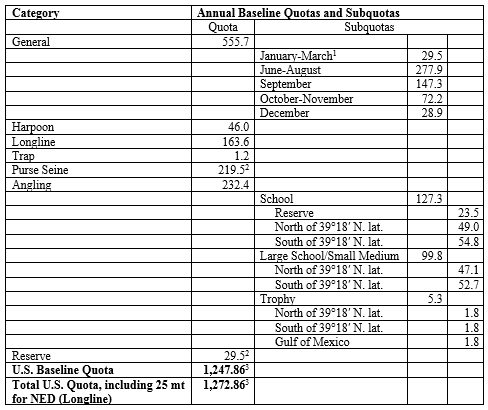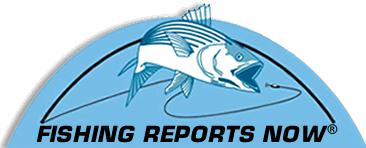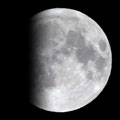Public Comment Invited
NMFS Announces Proposed Rule for Atlantic Bluefin Tuna and Northern Albacore Quotas and Minor Change in Regulations to Address Shark-damaged Tunas
NOAA Fisheries proposes to modify the baseline annual U.S. quota and subquotas for Atlantic bluefin tuna, as well as the baseline annual U.S. North Atlantic albacore (northern albacore) quota. The proposed rule would increase the baseline annual U.S. bluefin tuna quota from the 1,058.79-metric ton (mt) level established via a 2015 quota rule (80 FR 52198, August 28, 2015) to 1,247.86 mt, the level recommended for each of 2018, 2019, and 2020 by the International Commission for the Conservation of Atlantic Tunas (ICCAT) at its 2017 annual meeting. The baseline annual bluefin tuna subquotas for the domestic fishing categories would be adjusted consistent with the process (i.e., the formulas) established in Amendment 7 to the 2006 Consolidated HMS FMP (Amendment 7; 79 FR 71510, December 2, 2014) and codified in the quota regulations, and these amounts (in mt) would be codified. It also would increase the baseline annual U.S. northern albacore quota from the 527 mt level established in Amendment 7 to 632.4 mt, the ICCAT-recommended level for 2018, 2019, and 2020. This action would modify the regulations regarding annual quota adjustments of school bluefin tuna to reflect current ICCAT requirements regarding overharvest of that size bluefin tuna. Finally, NOAA Fisheries also proposes to make a minor change to the Atlantic tunas size limit regulations to address retention, possession, and landing of bigeye and yellowfin tunas damaged by shark bites. This action is necessary to implement ICCAT recommendations pursuant to the Atlantic Tunas Convention Act and to achieve domestic management objectives under the Magnuson-Stevens Fishery Conservation and Management Act. To view the proposed rule and supporting documents, see the Atlantic HMS Management Division's website.
Adjustment of the bluefin tuna quotas
Because bluefin tuna quotas, allocations, and resulting subquotas are codified in the HMS regulations at 50 CFR § 635.27, rulemaking is necessary to modify the baseline annual U.S. bluefin tuna quota (from 1,058.79 mt to 1,247.86 mt) and subquotas (in mt) to the General, Angling, Harpoon, Purse Seine, Longline, Trap, and Reserve categories per the process established in Amendment 7. The recommended total U.S. quota, including 25 mt to account for bycatch related to pelagic longline fisheries in the Northeast Distant gear restricted area, is 1,272.86 mt.
This proposed rule would modify the baseline U.S. quota and subquotas, which would be effective for the 2018 fishing year and annually until changed, for instance as a result of a new western Atlantic bluefin tuna ICCAT recommendation. See the table below for the proposed Atlantic bluefin tuna quotas. The proposed rule also would amend the regulations regarding annual quota adjustments to specify that NOAA Fisheries may adjust the annual school bluefin tuna subquota to ensure compliance with the ICCAT-recommended procedures for addressing overharvest of school bluefin tuna.
Adjustment of the northern albacore quota
Rulemaking is also necessary to modify the baseline annual U.S. northern albacore quota codified at 50 CFR § 635.27 (from 527 mt to 632.4 mt). This proposed rule would modify the baseline U.S. quota, which would be effective for the 2018 fishing year and annually until changed, for instance as a result of a new northern albacore ICCAT recommendation.
Minor modifications to the Atlantic tunas size limit regulations (for shark-damaged tunas) NOAA Fisheries also is proposing minor modifications to the Atlantic tunas size limit regulations to address retention, possession, and landing of bigeye and yellowfin tunas damaged by shark bites. NOAA Fisheries implemented similar measures for shark-damaged swordfish in 1996. This change would allow retention, possession, and landing of tunas for which a measurement to the fork of the tail may not be possible, provided that the remainder of the fish meets the applicable minimum sizes (e.g., 27 inches for yellowfin, and bigeye tunas). For enforcement purposes to preserve evidence that the carcass was shark-bitten, the action also proposes that no tissue may be cut away from or other alterations made to the shark-damaged area of the fish.
Proposed annual Atlantic bluefin tuna quotas (in metric tons)

1 January 1 through the effective date of a closure notice filed by NOAA Fisheries announcing that the January subquota is reached or projected to be reached, or through March 31, whichever comes first.
2 Baseline amount shown. Does not reflect the annual adjustment process (for the Purse Seine and Reserve category quotas) adopted in Amendment 7.
3 Totals subject to rounding error.
Public Comment Requested
You may submit comments (identified by “NOAA-NMFS-2018-0004”) through August 6, 2018, by using any one of the following methods:
- Electronic Submissions: Submit all electronic public comments via the Federal e-Rulemaking Portal. Click the “Comment Now!” icon, complete the required fields, and enter or attach your comments.
- Mail: Sarah McLaughlin, Highly Migratory Species Management Division, NMFS, 55 Great Republic Drive, Gloucester, MA 01930
Comments sent by any other method, to any other address or individual, or received after the end of the comment period, may not be considered by NOAA Fisheries. All comments received are a part of the public record and generally will be posted for public viewing on www.regulations.gov without change. All personal identifying information (e.g., name, address, etc.), confidential business information, or otherwise sensitive information submitted voluntarily by the sender will be publicly accessible. NOAA Fisheries will accept anonymous comments (enter "N/A" in the required fields if you wish to remain anonymous).
NOAA Fisheries will hold a public hearing conference call and webinar on July 17, 2018, from 3 p.m. to 5 p.m. EDT, to allow for an additional opportunity for interested members of the public from all geographic areas to submit verbal comments on the proposed rule. The public hearing conference call information is phone number 1-800-593-7188; participant passcode 6548000. Participants are strongly encouraged to log/dial in 15 minutes prior to the meeting. NOAA Fisheries will show a brief presentation via webinar followed by public comment. To join the webinar, click here; meeting number: 993 478 244; password: NOAA. Participants who have not used WebEx before will be prompted to download and run a plug-in program that will enable them to view the webinar.
This notice is a courtesy to permit holders to help keep you informed about the fishery. For further information, contact the HMS Management Division at (301) 427-8503, or go to the Atlantic HMS Management Division's website. Official notice of Federal fishery actions is made through filing such notice with the Office of the Federal Register.


